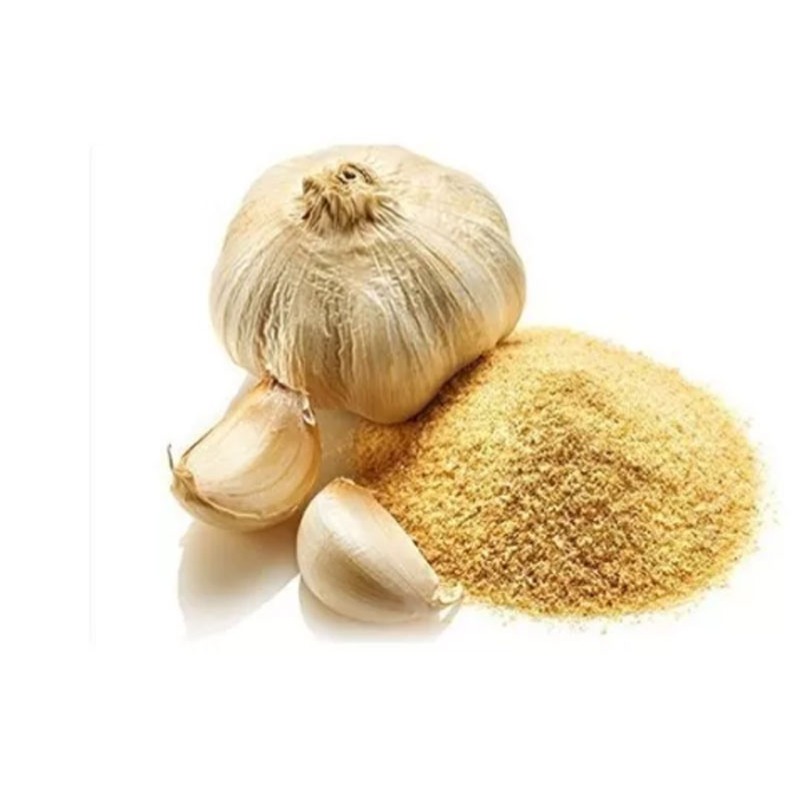Garlic Powder Reviews:
✅ Used as a seasoning.
✅ Can be used as a meat rub.
✅ Used in soup, sauce and as a salad dressing.
✅ 100% natural.
✅ Can be used as a spice in cooking.
✅ Mainly for culinary use.
Garlic powder is a spice that is derived from dehydrated garlic and used in cooking for flavour enhancement. The process of making garlic powder includes drying and dehydrating the vegetable, then powdering it through machinery or home-based appliances depending on the scale of production. Garlic powder is a common component of spice mix. It is also a common component of seasoned salt.
There are two types of garlic species: Softneck (Allium Sativum Sativum) and Hardneck (Allium Sativum Ophioscorodon).[2] Hardneck garlic varieties are believed to have more flavour than Softneck garlics, characterized by a spicy and more complex taste than other garlic strands.[3] While Hardneck Garlics flourish in cold weather, due to their extensive time of vernalization, Softnecks seemingly grow better in warmer climates. Distinguishing between a Hardneck and Softneck garlic is done through the presence of a scape (flower stalk).[4] The garlic species most commonly used to powder is the Softneck variety. Due to their less-complex scent and taste, the Softneck species are more suited as a garnish or spice in dishes and also have a longer storage life than Hardneck varieties.[5]
Garlic cloves thrive when planted in mid-autumn, in a location with plentiful sunlight. In tropical areas, garlic most successfully grows when planted in Autumn, maturing in early summer and is planted in later Autumn in cooler areas, to be harvested in late Summer.[6] The larger bulbs are split and inserted into soil, around 4-6 inches apart, and 3 inches deep, with the pointy end facing upwards. Softneck and Hardneck garlic are planted identically, however, Softneck garlics are more suited to warmer climates.
Garlic must be harvested at a particular time in order to prevent the vegetable from rotting, while also maximising the growth of each bulb within the skin.[4] Green garlic is indicative of harvesting that has taken place before the cloves have ripened, ‘soft’ garlic is the term given to a harvested garlic that is fully developed, while damaged garlic, with a caramelised appearance inside, has been harvested too late and a result of frost.[4] When the leaves turn yellow in colour, harvesting may be initiated.

Login To Comment